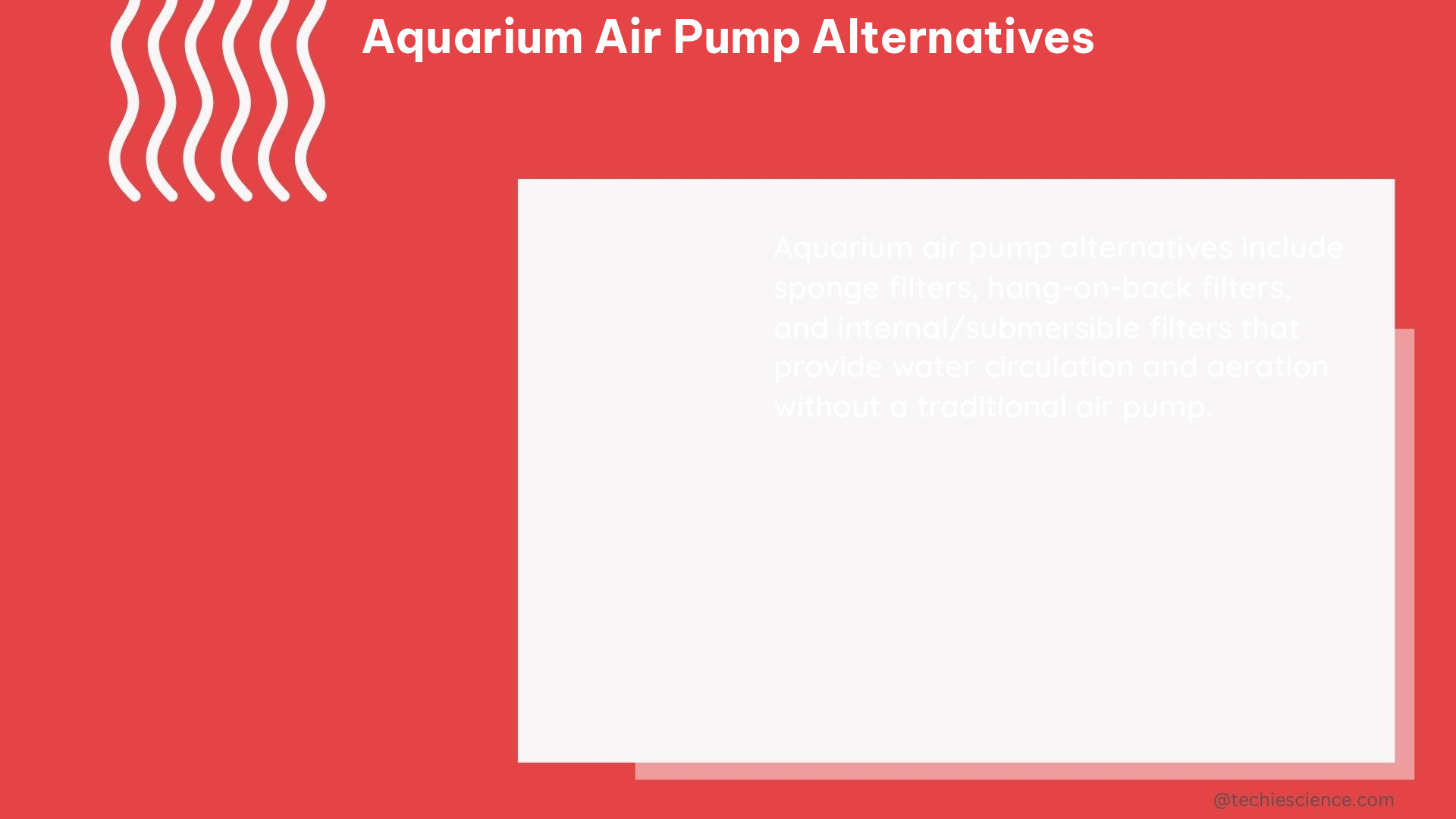Aquarium air pumps are essential for maintaining healthy aquatic environments, providing necessary oxygenation and water movement. However, they can be noisy and may not always provide the desired performance. Fortunately, there are several alternative solutions available that offer improved efficiency, quieter operation, and enhanced monitoring capabilities.
Compressors: Powerful and Efficient Air Delivery
One of the most effective alternatives to traditional aquarium air pumps is the use of compressors. Compressors, like those from California Air Tools, offer significantly higher air pressure and flow rates, making them suitable for larger tanks or those with greater oxygen demands.
The California Air Tools 8.0-Gal 1.0-HP Ultra-Quiet and Oil-Free Electric Air Compressor (8010), for instance, can deliver an impressive air flow rate of 2.2 CFM (Cubic Feet per Minute) at 90 PSI (Pounds per Square Inch). This is substantially higher than the typical output of most aquarium air pumps, which generally range from 0.5 to 1.5 CFM.
Moreover, compressors tend to be quieter in operation compared to air pumps. The Harbor Freight FORTRESS 2 Gallon 135 PSI Ultra Quiet compressor, for example, is rated at just 60 decibels (dB), making it an excellent choice for noise-sensitive setups.
DIY Arduino-Based Air Pump Monitoring System

Another innovative alternative is the use of a DIY air pump monitoring system based on an Arduino microcontroller. This setup allows for real-time pressure monitoring between the air pump outlet and the one-way valve, providing notifications when pressure drops or rises beyond set thresholds.
By implementing this system, aquarium owners can proactively address potential issues, such as air pump failures, before they lead to fish loss or other detrimental effects on the aquatic environment. The Arduino-based monitoring system can be customized to suit the specific needs of the aquarium, offering a tailored solution for optimal air pump performance.
Piezoelectric Pumps: Quiet and Compact
Piezoelectric pumps are another alternative to traditional aquarium air pumps. These pumps utilize a piezoelectric element to create vibrations, which in turn generate air flow. Piezoelectric pumps are known for their quiet operation and compact size, making them ideal for nano tanks or sensitive setups.
The Mylivell piezoelectric pump, for example, operates at a remarkably low noise level of around 45 decibels (dB), significantly quieter than most air pumps. This makes it an excellent choice for aquariums where noise levels need to be minimized, such as in bedrooms or office spaces.
Comparison of Aquarium Air Pump Alternatives
To help you make an informed decision, here’s a comparison of the key technical specifications of the aquarium air pump alternatives discussed:
| Product | Air Flow Rate | Noise Level | Power Source |
|---|---|---|---|
| California Air Tools 8.0-Gal 1.0-HP Ultra-Quiet and Oil-Free Electric Air Compressor (8010) | 2.2 CFM at 90 PSI | ~60 dB | Electric |
| Harbor Freight FORTRESS 2 Gallon 135 PSI Ultra Quiet compressor | Not specified | 60 dB | Electric |
| Mylivell Piezoelectric Pump | Not specified | Around 45 dB | Electric |
When selecting an alternative to a traditional aquarium air pump, it’s essential to consider the specific needs of your aquarium, such as tank size, oxygen requirements, and noise sensitivity. By carefully evaluating the available options and their technical specifications, you can choose the most suitable solution to maintain a healthy and thriving aquatic environment.
Conclusion
Aquarium air pumps are essential for providing the necessary oxygenation and water movement in aquatic environments. However, traditional air pumps can be noisy and may not always meet the desired performance requirements. Fortunately, there are several alternative solutions available, including compressors, DIY Arduino-based monitoring systems, and piezoelectric pumps.
Each of these alternatives offers unique advantages, such as higher air flow rates, quieter operation, and real-time monitoring capabilities. By understanding the technical specifications and features of these alternatives, aquarium owners can make an informed decision and select the most suitable solution for their specific needs.
Remember, when choosing an alternative to a traditional aquarium air pump, it’s crucial to consider factors like tank size, oxygen demands, and noise sensitivity to ensure the optimal performance and well-being of your aquatic inhabitants.
References:
- Aquarium Air Pumps: Everything You Need to Know
- Air Pumps Are Confusing
- Air Pump Recommendations Appreciated
- Aquarium Air Pump Monitoring System
- California Air Tools 8.0-Gal 1.0-HP Ultra-Quiet and Oil-Free Electric Air Compressor (8010)
